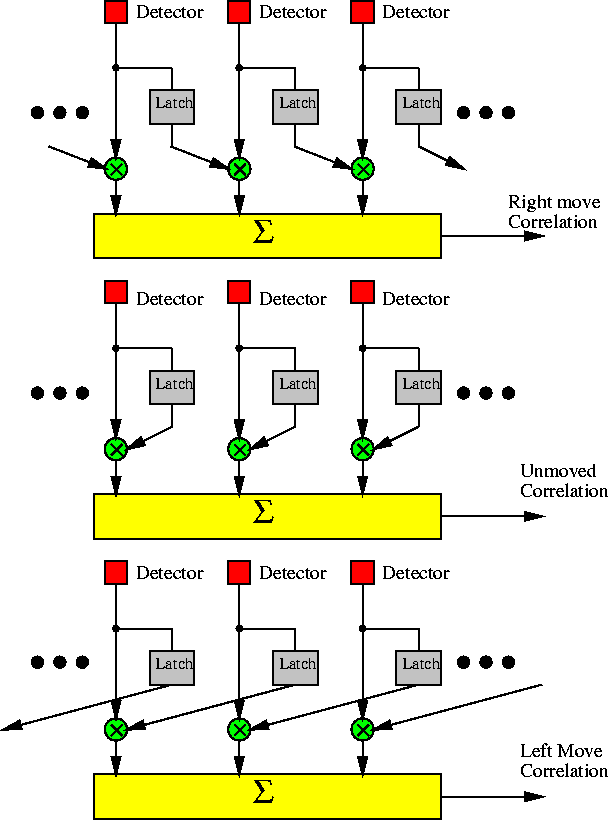This vision sensor implemented in NMOS inherits many design ideas used in Lyon's chip [Tanner and Mead 84]. It uses correlation to determine the direction of motion. Phototransduction is performed by an integration based photocircuit using a photodiode. The image at one sampling time is digitized to a one bit image pattern and stored in latches. It is then correlated with the analog signal detected in the next sample using the architecture shown in Figure 3.2. The digitization of the image to one bit in the latch branch is done for simplifying the design. Multiplication is performed using a simple current mirror switched by the output of the latch. The currents are summed by hard-wiring the outputs of all current mirrors.
A one dimensional array of this motion detector chips has been
fabricated using a 4 ![]() m NMOS process in a 5.7mm
m NMOS process in a 5.7mm ![]() 1.73mm die.
1.73mm die.

Figure 3.2: Architecture of Tanner and Mead's correlating motion detector.